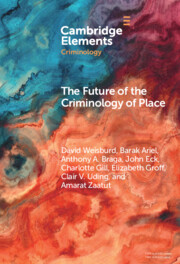Element contents
The Future of the Criminology of Place
Published online by Cambridge University Press: 13 January 2025
Summary
- Type
- Element
- Information
- Series: Elements in CriminologyOnline ISBN: 9781009590952Publisher: Cambridge University PressPrint publication: 06 February 2025

